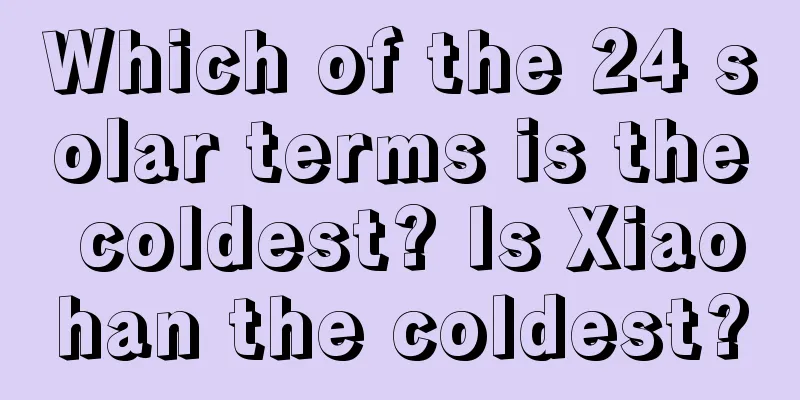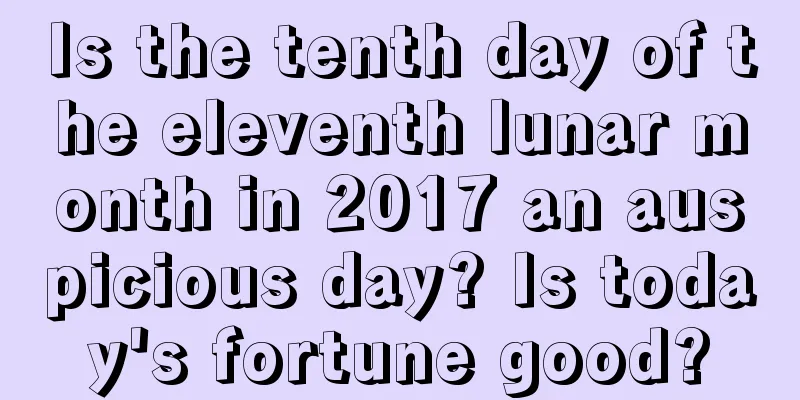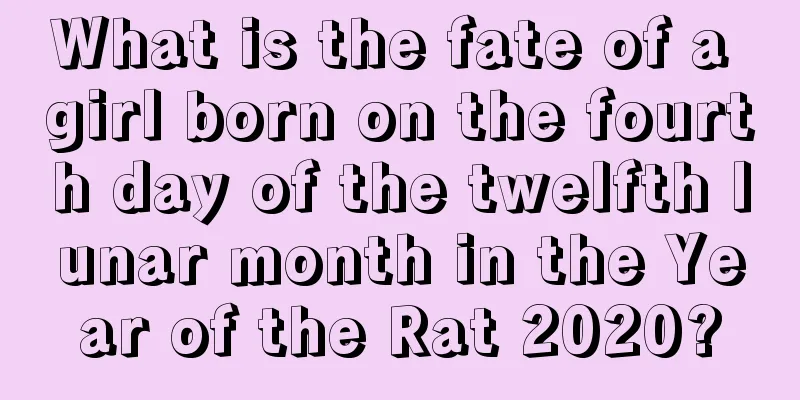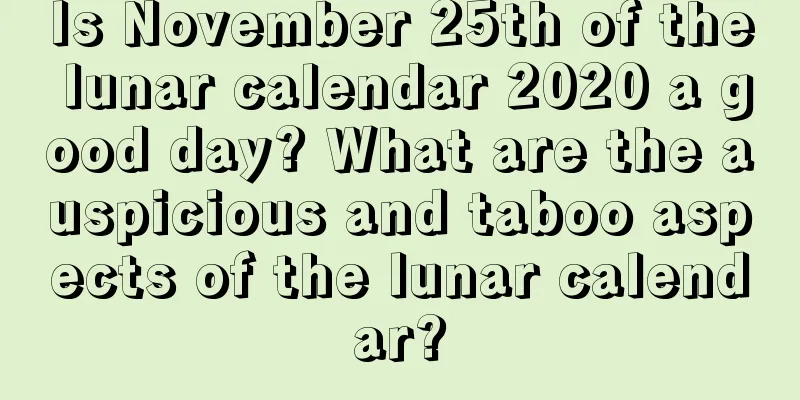Which of the 24 solar terms is the coldest? Is Xiaohan the coldest?

Introduction: The 24 solar terms are an important part of our country's traditional culture, and the solar terms represent climate changes. So which of the 24 solar terms is the coldest? Is Xiaohan the coldest solar term? It is November of the lunar calendar in 2018, and winter is approaching. Follow Mr. Shui Mo's website and we will accompany you through the cold winter.Which of the 24 solar terms is the coldest? Is Xiaohan the coldest?What does the Minor Cold solar term mean?1. In ancient China, the 24 solar terms represent 24 specific festivals of seasonal changes. People mainly use the 24 solar terms in the lunar calendar to guide agricultural farming. Minor Cold ranks 23rd among the 24 solar terms.2. Whenever we talk about cold, we will think of cold, and Xiaohan represents a degree of coldness in winter. The Minor Cold falls on January 5th to 7th of the Gregorian calendar every year. At this time, the sun will reach 285° of the ecliptic longitude, which means that "Minor Cold" marks the beginning of the coldest days of the year. According to China's meteorological data, Minor Cold is the solar term with the lowest temperature, and only in a few years does the temperature of Major Cold fall below that of Minor Cold. There is a saying among the Chinese people that "the coldest days are in the 39th day of winter", and the "39th day of winter" happens to be during the Minor Cold solar term, so it is normal that the Minor Cold is colder than the Major Cold. For people in the Yellow River Basin, the birthplace of the solar terms, according to meteorological records over the years, in most cases the temperature of the Lesser Cold is colder than the Greater Cold. Only in a small number of areas does the temperature of the Greater Cold have the lowest temperature of the year. Analysis of the characteristics of Xiaohan weather:When the sun's ecliptic longitude reaches 285 degrees, the Minor Cold solar term begins. Han means cold, and Xiaohan indicates the degree of coldness.The winter in southern China is significantly warmer. In January, the middle of winter, there is frost and snow, and freezing is common. The lowest temperature is around -10℃. However, the lowest temperature in northern South China rarely drops below minus 5°C, and temperatures below 0°C in southern South China are even rarer. The coldest area in China during the winter is northern Heilongjiang, where the lowest temperature can reach around -40 degrees Celsius. It is so cold that water freezes into ice. The low-altitude river valley areas are the warmest places in most parts of southern China in midwinter, with the average temperature in January being around 12°C, and only in a few years can temperatures drop below 0°C. In addition, the inversion effect is very significant, so tropical fruits such as bananas and mangoes can grow well. During the Minor Cold solar term, the East Asian trough develops to its strongest and most stable state, the Mongolian cold high pressure and the Aleutian low pressure also reach their strongest and most stable state, the westerly trough ridge reaches its largest scale, and is accompanied by the strongest westerly wind intensity. During the Minor Cold season, there are frequent cold air cooling processes, but not many of them meet the standards of cold waves. As the saying goes, "The coldest days of winter are the coldest." The "Three Nines" usually occur from January 9th to 17th, which also happens to be within the Minor Cold solar term. But this is just a general rule. In some years, the Great Cold may be colder than the Lesser Cold. People still remember that in the winter of 1975, the lowest temperature was actually heavy snow! The lowest temperature in South China in winter is not low, which is conducive to production and suitable for the development of diversified operations. The citrus fruit, which "is destined not to migrate but to grow in the south", generally requires a minimum temperature of no less than -5°C and an annual temperature of more than 15°C to grow. This condition can be met in most areas of South China, and almost all subtropical plants are also available. The reason for this is that the unique climatic conditions should be a very important factor. During the Minor Cold season, people should also pay attention to the weather station's forecast for strong cold air, prevent the impact of strong winds, cooling, rain and snow on Spring Festival travel, and take precautions against cold and frostbite. |
Recommend
Is it a good idea to get married on the eighth day of the seventh lunar month in 2017? Can I get engaged and get a marriage certificate?
1. What day is the eighth day of the seventh luna...
What day is the fifth day of the eighth lunar month in 2019? Can I travel?
What day is the fifth day of the eighth lunar mont...
Is it auspicious or unlucky for a person born on the Double Ninth Festival who is a snake?
The Double Ninth Festival is a traditional Chinese...
What about a boy born on February 30th of the lunar calendar in 2021? OK?
The fortune of a boy is related to the time of his...
Is July 16th of the lunar calendar in 2018 an auspicious day for signing a contract? Is today's fortune good?
When doing big things, Chinese people like to choo...
What do the three phases of Great Cold mean? What are the phenological characteristics of Great Cold?
The Great Cold is the last solar term of the winte...
Names for baby girls born on June 6, 2018
June 6th is also a good day. What names would be s...
Is it a good idea to move house on the second day of the sixth lunar month in 2017? Is it suitable for moving into a new house?
1. What day is the second day of the sixth lunar ...
Can Xiaoxue have a haircut on November 22, 2018? What should Xiaoxue pay attention to when having a haircut?
Introduction: Xiaoxue is one of our 24 solar terms...
What constellation is the 18th day of the twelfth lunar month in 2018?
After entering the twelfth lunar month, all parts ...
What is the fate of the seventh day of the first lunar month in 2018? What are the sayings and considerations?
The first month of the lunar calendar is the begin...
Is it okay to propose on the eighth day of the second lunar month in 2022? Can I propose to you?
If you want the proposal to go smoothly, you also ...
What are the do’s and don’ts on the first day of the eleventh lunar month in 2020? What are the taboos?
What are the do’s and don’ts on the first day of ...
Health preservation during the Rain Water solar term: Which vegetables are best to eat during the Rain Water solar term?
Introduction: Vegetables can promote gastrointesti...
What are the do's and don'ts on the second day of the ninth lunar month in 2017?
We have quietly stepped into a season full of har...









